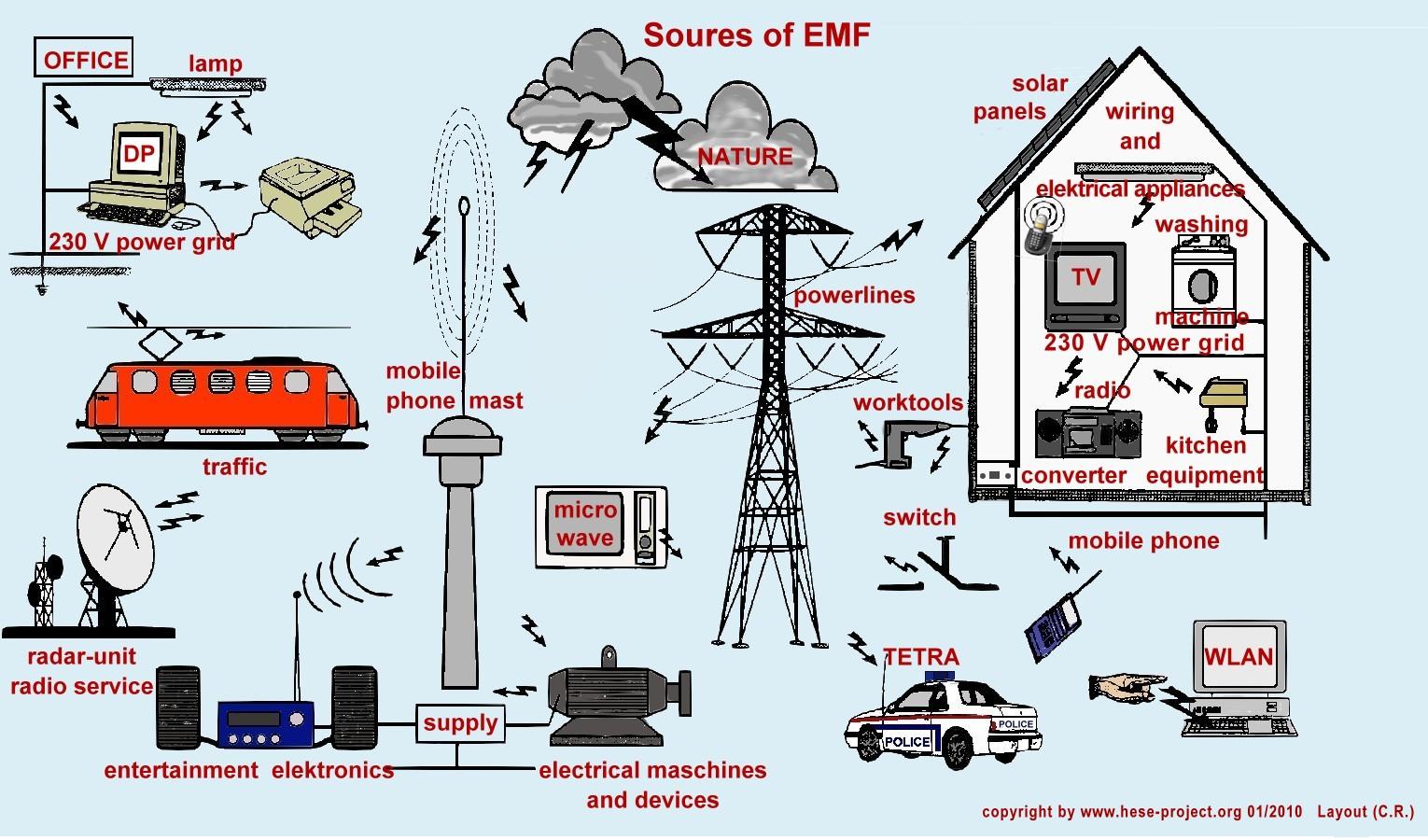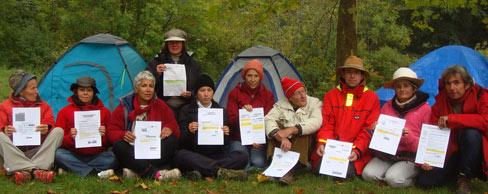
New Research Links Cell Phones To Health Issues In Children

BALTIMORE (WJZ) — For years, we’ve heard of a possible link between cell phone use and cancer. Now, this week, researchers in Baltimore say the evidence is clear, and children are more at risk.

The Wireless Technology ‘Conspiracy’ is Not a Theory

“What we’re doing is a grand world experiment without informed consent.”

Your Mobile Phone: Radiation Levels & Separation Distance

According to test reports filed with the U.S. Federal Communications Commission (FCC), the Specific Absorption Rate (SAR) for the iPhone SE for cellular transmission is 1.14 watts per kilogram (w/kg) at the head, and 1.14 w/kg when worn on the body. The wireless router SAR is also 1.14 w/kg. The SAR for simultaneous transmission (cellular plus Wi-Fi) is 1.59 w/kg at the head, 1.58 w/kg when worn on the body, and 1.56 w/kg when the phone is used as a hotspot.

Canadians are calling on building professionals to reduce their EMF exposure
 When leukemia struck Christian Groulx's three-year-old son, Ylan, in 2007, it rattled the Quebec builder's outlook on life. Luckily, Ylan was cured and Groulx was transformed right down to his building practices. That's because he learned that electromagnetic fields (EMFs) produced by power lines, electric appliances and home wiring are among the suspected triggers of leukemia and brain cancer, especially in children. In fact, electrical code violations are the major cause of EMFs.
When leukemia struck Christian Groulx's three-year-old son, Ylan, in 2007, it rattled the Quebec builder's outlook on life. Luckily, Ylan was cured and Groulx was transformed right down to his building practices. That's because he learned that electromagnetic fields (EMFs) produced by power lines, electric appliances and home wiring are among the suspected triggers of leukemia and brain cancer, especially in children. In fact, electrical code violations are the major cause of EMFs.
 The most common wiring error is to connect the neutrals from two different circuits, which happen to be sharing a box like a wall switch box with multiple switches, according to Karl Riley. Returning neutral current from one circuit then goes back on both neutrals (paralleling), unbalancing the cable and generating a magnetic field. This is a code violation as is grounding neutral buses in subpanels, but is commonly done out of both ignorance and convenience by many electricians.
The most common wiring error is to connect the neutrals from two different circuits, which happen to be sharing a box like a wall switch box with multiple switches, according to Karl Riley. Returning neutral current from one circuit then goes back on both neutrals (paralleling), unbalancing the cable and generating a magnetic field. This is a code violation as is grounding neutral buses in subpanels, but is commonly done out of both ignorance and convenience by many electricians.
 More and more people with electrohypersensitivity are leaving cities to live in the countryside away from high EMFs, such as this group in France showing their medical certificates confirming their diagnosis.
More and more people with electrohypersensitivity are leaving cities to live in the countryside away from high EMFs, such as this group in France showing their medical certificates confirming their diagnosis.

Military Radar and its Effect on Marine Life in Hawaii

BARKING SANDS — Representatives from Kauai’s conservation community recently met with representatives from the Pacific Missile Range Facility to discuss concerns that electromagnetic radiation coming from the high-powered radar and antennas could be the cause of coral’s decline.

WI-FRIED: Could wireless devices be harming our health?

Could Wi-Fi-enabled devices be harmful to our health? You cannot see it or hear it but Wi-Fi blankets our homes, our schools and our cities. Australia's safety agency says there's no evidence of harm, but that's not the same as saying its safe. A growing number of scientists are concerned that the widespread use of Wi-Fi and Wi-Fi-enabled devices could be slowly making us sick. In this Catalyst investigation, Dr. Maryanne Demasi explores whether our wireless devices could be putting our health at risk.

Wi-Fi Exposure Graphs at North Kingstown, Rhode Island, High School
 Below is a data plot of peak WiFi exposures experienced by a teacher and students at the North Kingstown, RI High School over two days, February 24, 2016 and February 26, 2016. The exposures resulted in the 9th Grade Math Teacher, Shelley MacDonald, experiencing migraines, brain fog, headaches and a throbbing head. When the teacher left school, the exposures and the symptoms stopped.
Below is a data plot of peak WiFi exposures experienced by a teacher and students at the North Kingstown, RI High School over two days, February 24, 2016 and February 26, 2016. The exposures resulted in the 9th Grade Math Teacher, Shelley MacDonald, experiencing migraines, brain fog, headaches and a throbbing head. When the teacher left school, the exposures and the symptoms stopped.


- WiFi exposure varied from period to period and also within class periods.
- WiFi should not be thought of as benign, static background energy, as in reality it is a highly variable, pulsing energy with high peaks.
- Exposures in the school are well above the recommended BioInitiative safe indoor safety guideline of .1 mW/m2 or 100 uW/m2
- A “cumulative exposure” measure would be a more accurate reflection of risk, as a one moment in time measurement does not convey the nature or amount of exposure to biologically active Radiofrequency radiation.
- Similarly, a metric for “Percentage of a Day” exposed, accounting for any times the body could rest and rebalance, would also be beneficial as a means of monitoring exposures.
- Using “average” exposures to determine if an exposure is within the current FCC thermal safety guidelines is inappropriate, as “average” exposures do not in any way reflect the true nature of the exposures, with pulsing and peaks. It is the pulsing and peaks to which the body responds, not the engineering measure of an ‘average’.
- Just because Wi-Fi is invisible does not mean it is not there or not biologically disruptive.
- WiFi routers in schools are typically industrial strength routers, designed to go through cement, to handle 100s of users, and to extend the signal into a large area through a building or campus. School routers are far more powerful than home routers.
- WiFi routers in schools keep getting stronger, and the signaling characteristics change. Newer router systems are directional in nature, meaning certain students in a classroom will be more exposed to the WiFi than others.
- North Kingstown High School is using WiFi despite the fact that the school already invested in hard-wiring capability. It is risking the health of students, faculty and administrators despite the fact that a safer alternative exists.
Last Fall, we contributed a list, 10 Elements of an Electromagnetically Clean and Conscious School, for an article in Boston Parents, “Is WiFi Safe In Schools?”, and recommend them here for N. Kingstown High School:
- Use hard-wired cable or fiber optic communications networks, replacing over-the-air Wi-Fi transmissions.
- Install workstations with Ethernet connections available throughout the school for laptop Internet access.
- Teach students and school personnel to disable Wi-Fi functionality on laptops and personal devices and remove wireless “smart boards.”
- Institute a “No Cell Phone” policy on campus, including personal hotspot devices.
- Hard-wire computer peripherals such as mice, keyboards, speakers, monitors and other accessories.
- Hard-wire printers and disable Wi-Fi function.
- Disallow iPads or other tablets for students unless they accommodate an Ethernet connection and provide the ability to disable the wireless.
- Train school personnel to be alert for signs of chronic electro-sensitivity symptoms such as headaches, dizziness, fatigue, irritability, heart irregularities and concentration problems.
- Educate parents about the advisability of hard-wiring computers and Internet connections and limiting mobile phone use in the home.
- Assess via www.antennasearch.com and with a radio frequency (RF) meter any external RF radiation sources, such as from antennas or towers, within a mile of the school.

Antennas Near My House
Use www.antennasearch.com to search for antennas near your home or place of work. You might be surprised by the results!


Smithville, TX Awareness Sparks Smart Meter Backlash
 SMITHVILLE, TX— Smithville is a small town of about 3800 residents in central Texas, about 40 miles southeast of Austin and about 100 miles northeast of San Antonio. It’s not just the town’s name – even residents say Smithville is a fairly ordinary small town and typical of “middle America” with a Main St. where everyone knows each another. A community meeting there last November that presented information about smart meters ignited debate and participation, galvanized the town to action, and generally shook politics up in a good way, according to residents.
SMITHVILLE, TX— Smithville is a small town of about 3800 residents in central Texas, about 40 miles southeast of Austin and about 100 miles northeast of San Antonio. It’s not just the town’s name – even residents say Smithville is a fairly ordinary small town and typical of “middle America” with a Main St. where everyone knows each another. A community meeting there last November that presented information about smart meters ignited debate and participation, galvanized the town to action, and generally shook politics up in a good way, according to residents.
On the evening of November 5th 2015, more than 110 residents packed into an old school auditorium in the center of Smithville. The crowd included 4 of 5 city council members and 2 officials from Ameresco. Many were taken aback by the size of the crowd, including one of Ameresco’s staff who was reportedly appeared to be in shock at the number of people gathered to hear about the problems with the company’s products.
Customer support service by UserEcho


